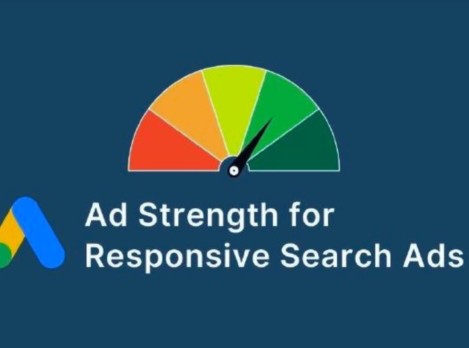When it comes to responsive search ads on Google Ads, there’s a score Google gives each individual ad based on the assets and copy in the ad. The score is presented in one of four categories: Poor, Average, Good, Excellent.
As you add or edit your ad copy, your ad strength changes. Google will also show some suggestions it believes will increase the strength of your ad.
How Many Headlines Do I Need?
With Google Ads it’s rarely a question of quantity, but rather one of quality. Much the same can be said about Ad Strength, but there are some numbers that matter in this conversation. To achieve a ‘Good’ Ad Strength, you must have a minimum of four headlines. After that, it gets a little less black-and-white. However, it’s nearly impossible to achieve an ‘Excellent’ Ad Strength with any less than eight headlines and achieving that ‘Excellent’ status gets easier with more and more headlines.
This does not mean that simply adding headlines will improve your ad strength. It’s entirely possible to fill all fifteen headline spots and still achieve a ‘Poor’ Ad Strength score. Google is also checking to see if your keywords are in the headlines you have, and if those headlines are different enough to one another to satisfy Google’s diversity qualifications. In other words, whether you have six headlines or fourteen, those headlines have to be relevant to the ad group they’re in and they have to be different from each other.
What About Pinning Headlines?
It is very unlikely to have an Excellent ad strength with any degree of pinning. However, if you are going to use pinning as part of your strategy, it is best to use full pinning. It is possible to achieve a ‘Good’ score with a full pinning strategy. It’s important to remember that the point of a Responsive Search Ad is to give Google different options to create as many variations of your ad copy as it can. Pinning restricts the freedom Google has to create different variations.
How Does Ad Strength Affect KPI’s?
In short, it doesn’t. A study was performed where several different ad groups that had two similar Responsive Search Ads in each group were tested. At the end of the experiment the RSA with higher ad strength saw more impressions 56.8% of the time, the RSA with a higher ad strength had fewer impressions 36.6% of the time, and just 6.6% of the time did both RSAs have equal performance. When it comes to click-through-rate, the RSA with higher ad strength had a lower CTR 51.5% of the time. Just 47.3% of the time did a higher ad strength result in a better CTR. Conversion Rate saw similar results; higher ad strength had a lower conversion rate 54.2% of the time.
What Does This All Mean?
Based on the results of the study, it appears as though Google’s Ad Strength Score is little more than a degree to which Google is able to test a particular RSA. It doesn’t seem to have a major effect on an ad’s ability to drive conversions or clicks. This isn’t to say Ad Strength is completely irrelevant. If your ads are not converting, looking at Ad Strength can help you find the deficiencies in your ads. It’s also important to remember that Google is constantly tinkering with its algorithms, and there may come a time where Ad Strength begins to show a greater correlation to clicks and conversions.
Ultimately, as long as your bottom-line KPI’s are being met, what google thinks of the strength of your ads can be somewhat irrelevant. It’s best to think of ad strength as a troubleshooting guide, not a roadmap to conversions.
Our Google Ads team is constantly testing new updates in Google Ads. Need some direction on your PPC advertising?







